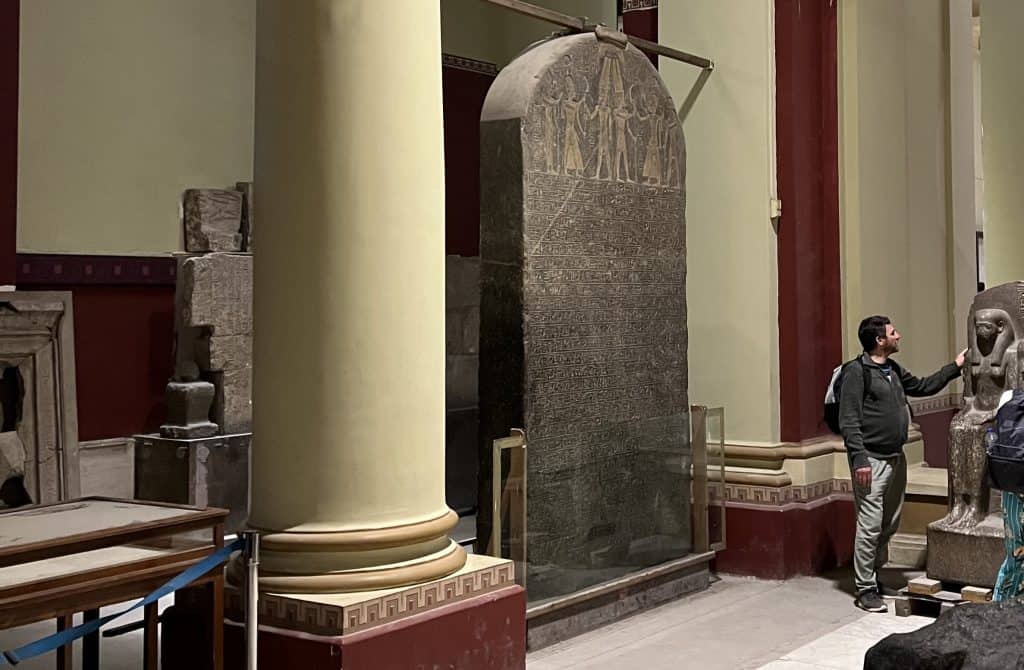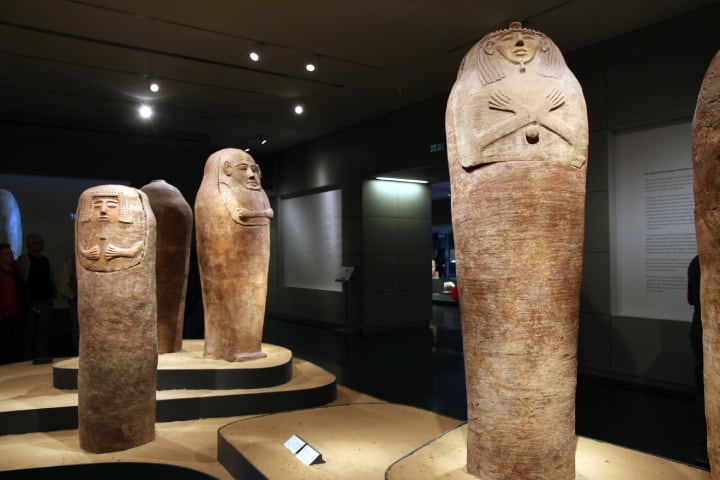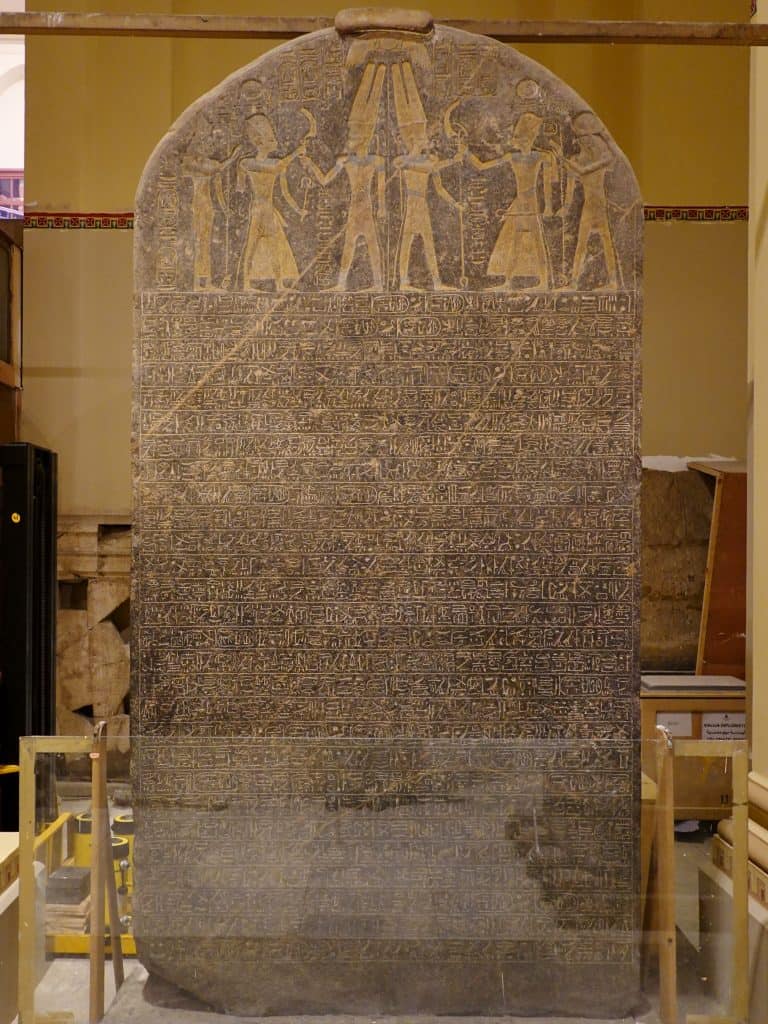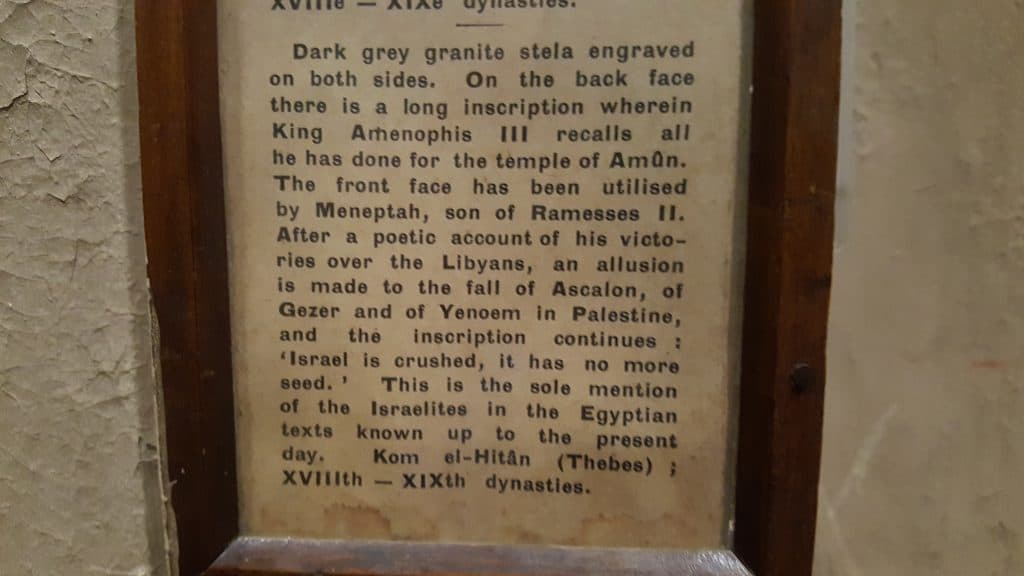The Israel Stele, also known as the Merneptah Stele, is a significant historical artifact discovered by renowned British archaeologist Sir Flinders Petrie, in 1896.

Credit: Onceinawhile, CC BY-SA 4.0, via Wikimedia Commons
The stele is a large, inscribed slab of black granite that stands over seven feet tall and contains 28 lines of hieroglyphic text. The text on the stele commemorates the military victories of the ancient Egyptian pharaoh, Merneptah, who ruled Egypt from 1213 to 1203 BCE.
Top 10 Archaeological Sites in Israel

The significance of the Israel Stele lies in the fact that it contains the earliest known reference to the name “Israel” in any ancient text. The inscription on the stele refers to a people called “Israel” who were defeated by the forces of Merneptah during his military campaign in Canaan. The text reads: “Israel is laid waste and his seed is not; Palestine has become a widow because of Egypt.”

Israel Stele – The Earliest Mention of the People of Israel
Scholars consider this reference to “Israel” on the stele to be the earliest known mention of the people who would later become known as the Israelites. The stele provides important evidence for the existence of the Israelites in the Late Bronze Age and confirms the biblical account of the Israelite conquest of Canaan. The discovery of the Israel Stele by Sir Flinders Petrie was a significant event in the history of biblical archaeology.

Credit: Olaf Tausch, CC BY 3.0, via Wikimedia Commons
So Petrie, known for his meticulous excavation techniques, found the stele while excavating the ancient city of Thebes in Egypt. The Israel Stele was initially thought to be a reference to the biblical story of the Exodus. Still, later scholars realized it referenced a later period in Israelite history.
The Israel Stele is now housed in the Egyptian Museum in Cairo and is considered one of the most important ancient artifacts in the study of biblical archaeology. Furthermore, the inscription on the stele provides valuable historical evidence for the existence of the Israelites in the ancient Near East and confirms the biblical account of their early history.

In conclusion, the discovery of the Israel Stele by Sir Flinders Petrie was a significant event in the history of biblical archaeology. The stele contains the earliest known reference to the name “Israel” in any ancient text and provides significant evidence for the existence of the Israelites in the Late Bronze Age. The stele remains a valuable source of information for scholars studying the ancient Near East’s history and the Israelites’ biblical account.

